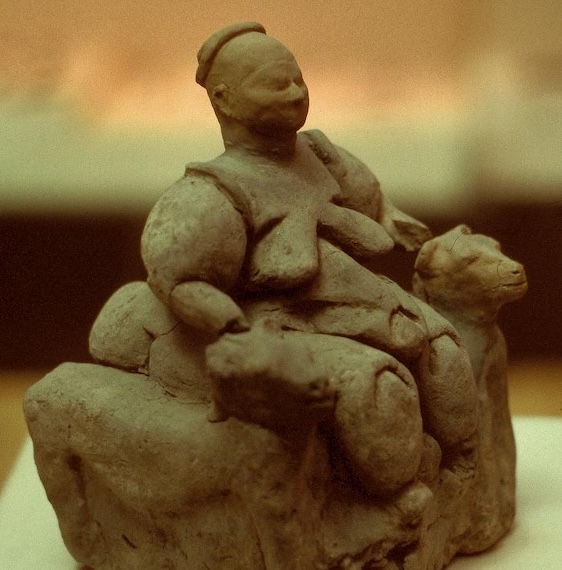Ann Arbor (Informed Comment) – A new study by Dilek Koptekin et al., a Swiss-Turkish team, has appeared in Science that combines archeological and genetics research to shed new light on the emergence of farming in the Middle East in the transition from hunting and gathering called the Neolithic Revolution. The authors find that big villages or perhaps “towns” like Çatalhöyük in what is now Turkiye, moreover, were matriarchal, with female lineages being very important.o
In the twentieth century, some archeologists imagined the Neolithic world as dominated by warriors, some of whom drove out weaker conquered populations, accounting for the spread of farming. Their minds would have been blown by the idea of dominant female farmers peacefully sharing their knowledge with neighboring hunter-gatherers.
It is no accident that this adoption of agriculture began in what is now central and western Turkiye after the end of the last maximal ice age 11,700 years ago. The beginning of the Holocene some 10,000 years ago saw a relatively stable climate that was warmer than that in the age of the glacial maximum that covered Europe and North America with miles of ice. The temperate weather band in the Neolithic Near East helped foster agriculture.
The farming revolution first took place in Anatolia, what is now Turkiye, and in Mesopotamia. Around 7000 BCE it seems to have jumped to what is now Greece and then the Balkans.
Archeologists have wondered if farmers were more successful populations, having an abundance of food and livestock, and so could gradually displace the hunters and gatherers. That is, did new food-producing technologies allow some groups to flood into western Turkiye and then Greece, pushing aside local groups, who dwindled as they failed to adapt?
Koptekin and colleagues found that the genetic record suggests a much more complicated picture. They find genetic stability in central and western Anatolia from 9,000 BCE to roughly 7,000 BCE. People were adopting agriculture from neighbors and implementing it themselves, without moving around much. Culture was spreading, not peoples. It is a more edifying image, of neighboring peoples learning from one another and then using that knowledge to enrich themselves and create villages instead of always foraging.
Moreover, team members told Kristina Killgrove at Live Science that women were key players in big villages / early towns like Çatalhöyük. Co-author Mehmet Somel told her, “With Çatalhöyük, we now have the oldest genetically-inferred social organization pattern in food-producing societies. Which turns out to be female-centered.”
The team found that nuclear family members tended to be buried together, and more distant relatives around them, and that maternal lineage was determinative. The impressive settlement has long been known for the large number of female figurines, presumably goddesses, that show up in the excavations. The large village/ small town was inhabited for a millennium, 7100 BCE to 6100 BCE. Girls who died in childhood got more burial gifts, suggesting greater status and power for females.

“Mother Goddess on feline throne (birthing chair?); figurine from Level II, Catal Huyuk.” In the digital collection Art Images for College Teaching. https://quod.lib.umich.edu/a/aict/x-ant002/ant002. University of Michigan Library Digital Collections. Accessed June 30, 2025. Allan T. Kohl, the creator of this collection, has dedicated any copyright he might hold in the collection to the public domain, via the CC0 1.0 Public Domain Dedication.
Koptekin told Stephanie Baum at Phys.org, “In some regions of West Anatolia, we see the first transitions to village life nearly 10,000 years ago. However, we also observe thousands of years of genetic continuity, which means that populations did not migrate or mix massively, even though cultural transition was definitely happening.”
Then there is some influx around 7000 BCE into Western Anatolia from eastern Anatolia, or maybe from what is now Iraq.
Then there is an influx of that new mixed population of farmers into Greece. They really do seem to be a separate farming population that did not mix so much with locals (though such Anatolian immigration and intermarriage with Europeans is attested later elsewhere, in places like what is now Switzerland).
Speaking about the study to Koray Erdogan at Turkiye Today, Anna-Sapfo Malaspinas, a computational biologist, said “Genetically speaking, these people were mainly locals … Yet their material culture evolved rapidly. This suggests that these communities adopted Neolithic practices by cultural exchange rather than population replacement.”


 © 2025 All Rights Reserved
© 2025 All Rights Reserved